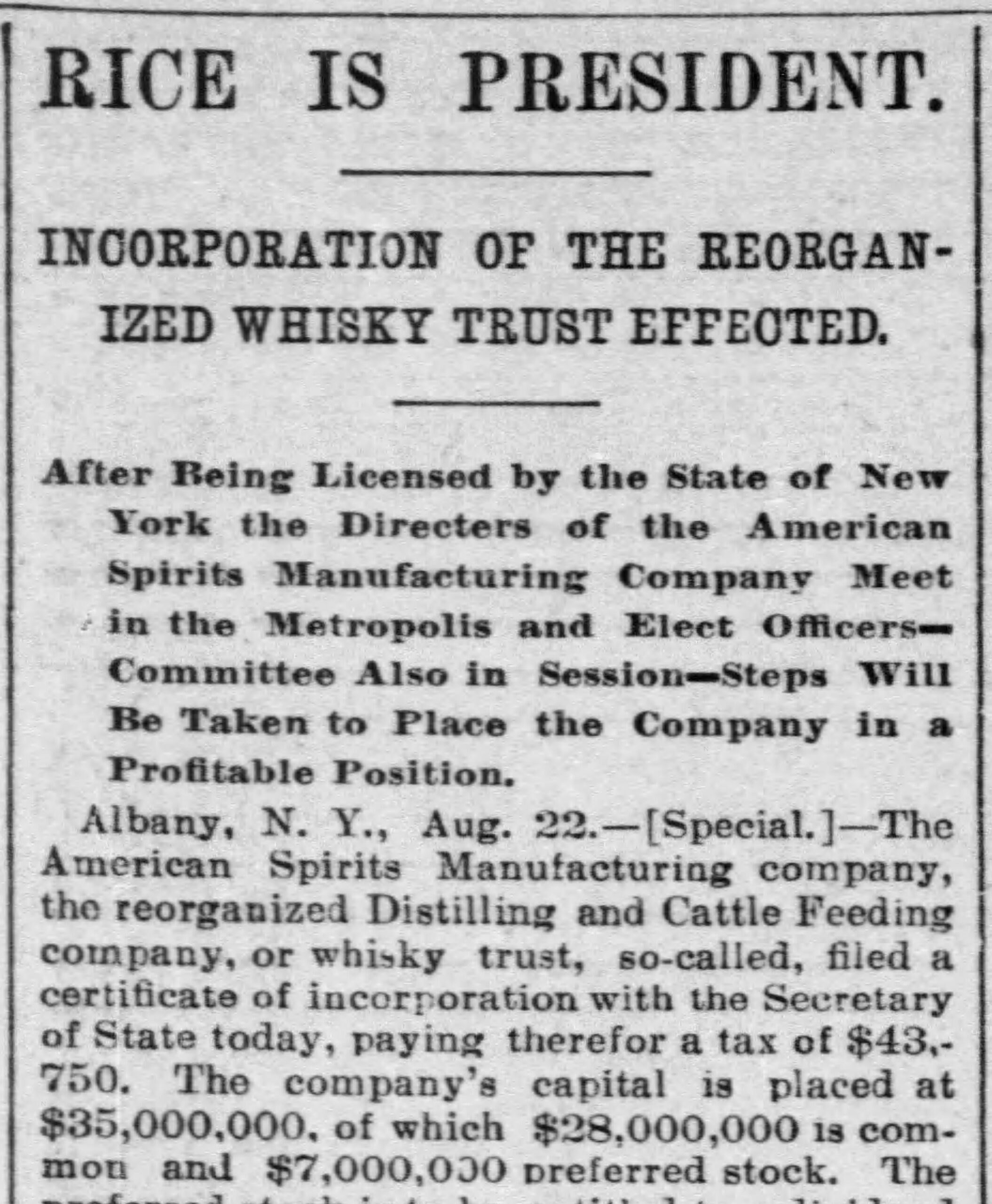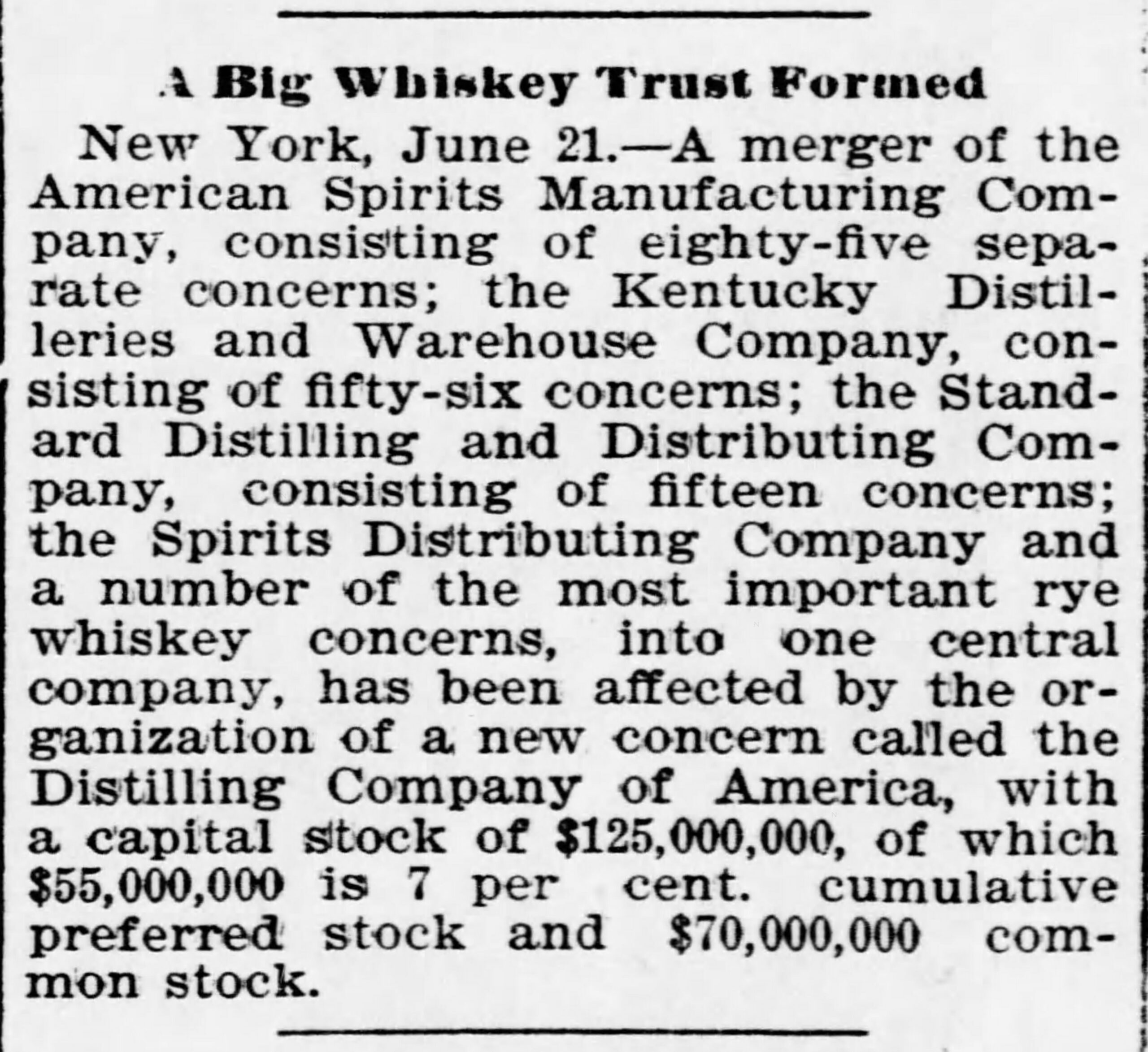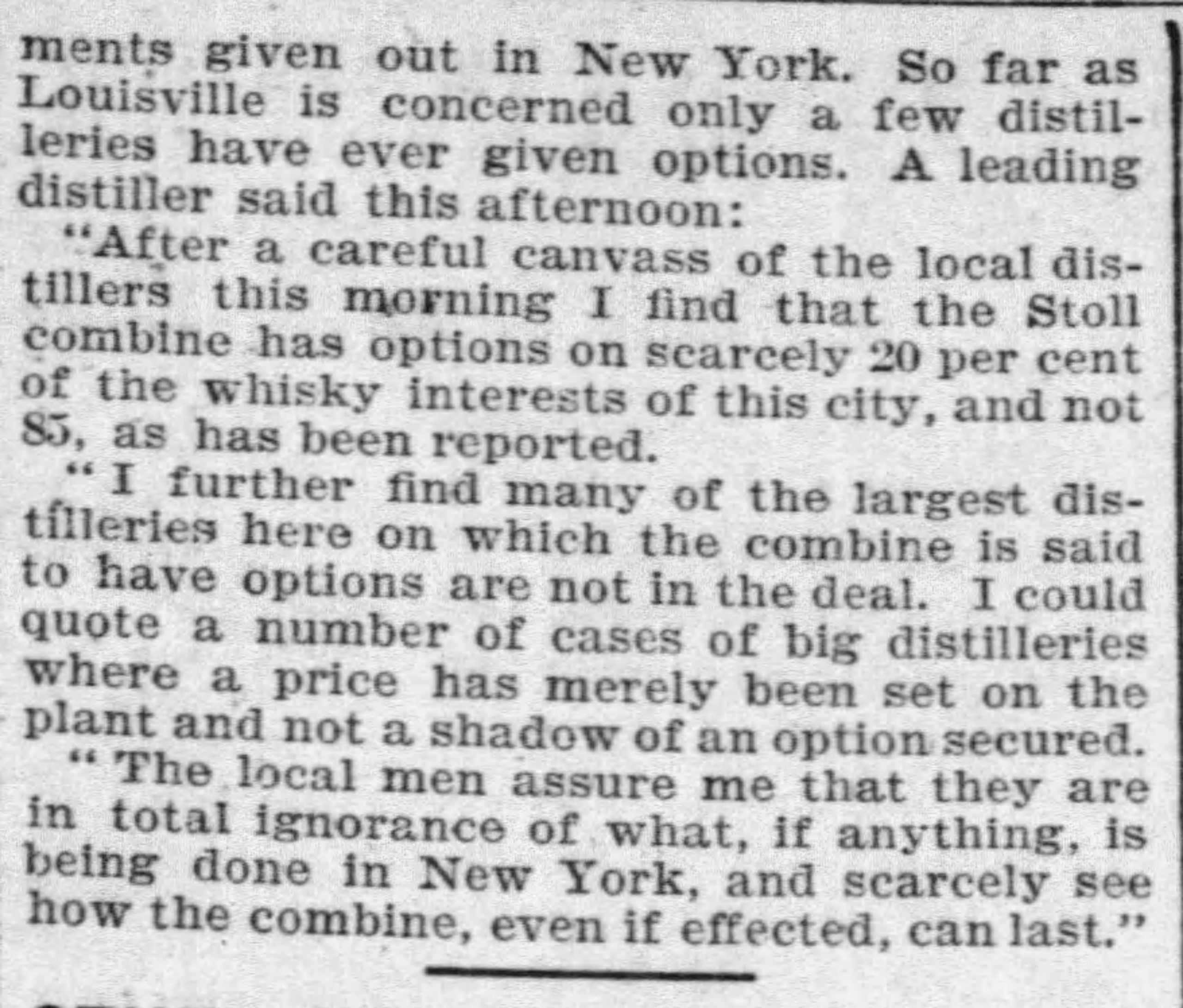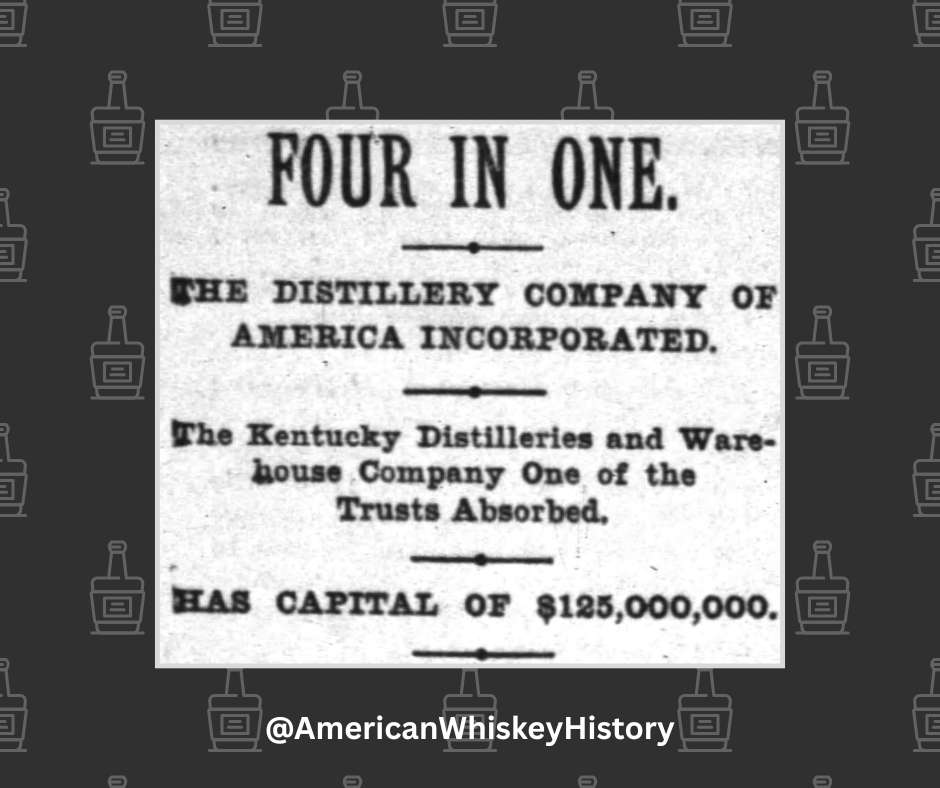The “Whiskey Trust” was not a footnote in the story of American whiskey history, though it is often treated as such by whiskey historians. The evolution of the Trust after 1895 defines a turning point in American whiskey’s story. The history of the American whiskey industry can be divided between the era BEFORE the Trust and the era AFTER the Trust- It’s that important! The dissolution of the Distillers & Cattle Feeders Trust wasn’t a glitch in the history of American whiskey, it became a feature in how the industry would evolve going forward. After the Trust was broken up in 1895, it morphed into a corporation with subsidiaries. The old Trust, with all its notoriety and bad publicity, built itself a pretty new facade. It became the American Spirits Manufacturing Company, representing all the most valuable assets of the old Trust.
At the end of this article, I’ve posted a newspaper clipping which lays out a list of the distilleries that had been acquired by the newly formed “Whiskey Trust” by 1899. While the Distillers and Cattle Feeders Trust (the old Whiskey Trust) had been based in Peoria, Illinois, the newly formed American Spirits Manufacturing Company began operating out of New York City after its immediate reorganization in 1895. Since the 1880s, the goal of the trust had always been to create a monopoly within the liquor industry, but they had previously been unable to achieve that end. After four years of strategically buying companies and stockpiling whiskey barrels between 1895 and 1899, the new face of the Whiskey Trust was able to regroup and refine their plan to monopolize the American whiskey industry. This time around, with new leadership in place and with high-priced lawyers navigating any necessary legal loopholes, its redoubled efforts would finally find success.

The Trust’s new vision was to form a parent company, which they planned to capitalize around $125,000,000. One hundred and twenty-five million dollars in 1899 would be equivalent to about (hold onto your hat) $5 BILLION in 2025! This was no small venture- rivaling even the valuation of the Standard Oil Trust at the turn of the century. The $125,000,000 figure was arrived at through a rose-tinted evaluation of the American Spirits Manufacturing Company’s subsidiaries-
 1. The American Spirits Manufacturing Company, with a capital of $35 million.
1. The American Spirits Manufacturing Company, with a capital of $35 million.
2.The Standard Distilling and Distributing Company, capitalized at about $25,000,000.
3. Spirits Distributing Company, capitalized at $7,500,000.
4. Kentucky Distilleries and Warehouse Company, representing about 90% of the active distilleries in Kentucky at the turn of the century, was founded in New Jersey on February 3, 1899 with a capital of $32 million.
5. ??????
That elusive 5th component of the Trust’s scheme was meant to be the feather in its cap. It was supposed to represent a combine of Eastern rye whiskey distilleries, which they valued at approximately $50 million. That $125 million dollar evaluation was made with the assumption that the “new Trust” would be able to acquire most of Pennsylvania and Maryland’s rye whiskey distilleries. In 1899, newspaper articles described the formation of a “Rye Whiskey Combine”, capitalized at about $50,000,000, which the Trust intended to tack onto its growing portfolio of acquisitions. Unfortunately for the Trust, the millionaire rye whiskey distillery owners were not interested in selling. The machinations of the men leading the Trust’s new corporation were thwarted by the refusal of America’s Eastern Rye Whiskey companies to play along. Owning majority shares in 90% of Kentucky’s distilleries was not enough to finalize the deal. By 1900, the new Trust’s proposal to form of the Distilling Company of America was forced to downgrade and restructure again. All of the stock for the Distillers Company of America was transferred to form the “Distillers Securities Company”. For more on this, read THIS.
At the end of the following newspaper clipping , you can see the list of companies which would form the Kentucky Distillers and Warehouse Company, a subsidiary of the American Spirits Manufacturing Company. If the name looks familiar, that’s because the American Spirits Manufacturing Company would reorganize itself again in 1927 as the American Medicinal Spirits Company. The reorganization and renaming of the company coincided with the Trust’s plans to seize the rights to manufacture medicinal spirits for the US government during Prohibition. So…when I say that these efforts were purposeful (not a glitch, but a feature), I think we can safely say that the history speaks for itself.



